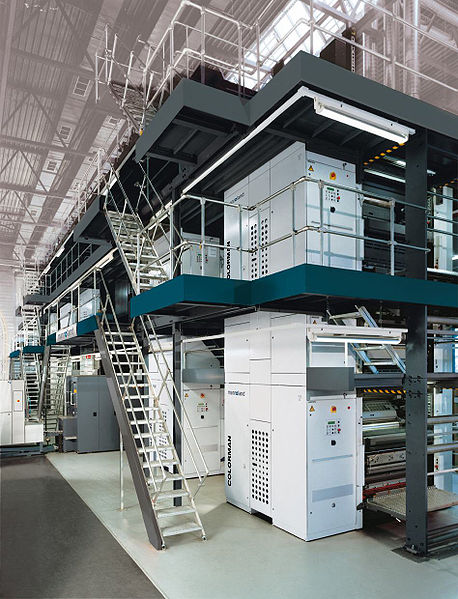I attended the recent Publishing Expo at Earl’s Court and left with an overpowering impression that this is an industry in urgent need of transformation. The show guide cover carries a photo of what I take to be a chameleon, presumably because it is capable of changing colour. Unfortunately, I understand that many species of chameleon are endangered due to the loss of their habitat, so let’s hope this is not an appropriate metaphor for the publishing industry.
Emerging into daylight from the Piccadilly Line at Earl’s Court tube station, visitors to Publishing Expo were obliged to walk three-quarters of the way around the outside of the Exhibition Centre, past three other, larger, events. This is such a long walk that you actually pass several bus stops and another tube station en route (West Brompton).
To give some idea of the publishing industry’s place in the pecking order, the main hall (Earl’s Court 1) was taken by Confex – Europe’s leading event for event organisers. Earls Court 2 was playing host to TFM&A, Technology for Marketing & Advertising – and OA&A, the Online Advertising & Affiliate Expo. Our entrance was even further round. You fear that, next year, the publishers might be reduced to a shed in the furthest corner of a car park.
Publishing Expo covered an area a little larger than a football field and hosted about 85 stands, representing publishers, printers, consultants, software suppliers, mailing and subscription services. That’s not what I came for. There were also four partitioned-off theatres, each with around 70 seats and most of the twelve sessions each offered over the two days of the event were oversubscribed, with a dozen or so people standing at the back. Once everybody realised the situation, queues formed early outside these venues. By my calculation, at any given time, 300-odd people (as opposed to 300 odd people) were either engrossed in one of these seminars or standing in line for the next one. Considering that entrance was free, both to the Expo and the seminars, this was a most rewarding way to spend two days. I attended eight sessions and would have made it more had it been possible. The 40-minute talks were given by an authoritative and comprehensive range of speakers, but only one of those I attended had time for an open Q&A, which was disappointing, though all invited delegates to stop on and put any questions one-to-one.
Talks covered a broad range of topics of interest to anybody involved in the production and distribution of books, newspapers and magazines, but the overriding message was the urgent need to deal with the threats and opportunities offered by new technology. Publishers are skilled in the commissioning, creation and distribution of content via a medium now referred to disparagingly as ‘ink on dead wood’, but their audience is rapidly migrating onto new platforms. Some of the nuggets I picked up over the two days included:
- the circulation and readership of printed matter will decline by 50% within five years;
- publishers are competing for readers’ attention with social media such as Facebook, on which young people spend 45 minutes a day; this doubles when they have smart phones;
- most people will have smart phones by the end of 2012 as prices fall;
- classified advertising has already migrated online and display advertising is being squeezed from both ends, by Google Adsense and by sponsorships;
- ‘cost per thousand’ rates for online advertising have plummeted in line with the explosion in inventory (advertising space);
- readers are reluctant to pay for ‘general’ content as it is available free, from aggregators;
- paywalls may not be the answer – there are other ways to ‘monetize’ the relationship with readers;
- disintermediation is cutting publishers out of the business model as advertisers take their message direct to their customers;
- Apple will take a 30% commission on new subscriptions and will not hand over subscriber data to publishers;
- the iPad alone will not save publishers;
- whereas printed publications are zero-rated for VAT purposes, when they are delivered as apps they are subject to the standard 20% rate.
At the same time as speakers were trying their utmost to impress upon the audiences the urgency of the situation, they also encouraged us to see the opportunities offered by this rapidly changing landscape:
- There is still a place for specialist content and content is still king;
- contract/customer publishing is thriving.
- publishers have the skills needed to be successful in this bright new world, creating or commissioning compelling content and using good design to place it in the best possible environment;
- publishers know how to give material a tone and character to distinguish it from the aggregators;
- the new ePub 3.0 standard allows the incorporation of rich media (audio and video content) into electronic publications;
- there are opportunities to sell books by the chapter (as academic publishers do via the Inkling app in the US), newspapers by the section, magazines by the article;
- the potential audience is now global (bringing new challenges with language, location, time zones and cultures).
But there are lessons to be learned:
- it is not sufficient to publish an online facsimile of the print version;
- readers expect to be engaged and interact with a rich media experience, including video and audio;
- publishers need to investigate the potential offered by the sort of devices their audience are using – they must understand their functionality in order to exploit it;
- they must also familiarise themselves with the power and potential of apps;
- it is essential for publishers to harness social media and put it at the hub of their offerings.
Stepping from the Publishing Expo into the neighbouring hall was like coming directly from a wake to a party and just as disorientating. There was a much younger age profile; the mood was more upbeat; there was much more conversation, colour, noise, coffee, networking and laughter; there were more people, more densely packed and blocking every aisle. It occurred to me that there were people here whose services would help publishers exploit their content. By the same token, some of these marketing and online advertising people would probably give their right arm for the wealth of content the publishers are sitting on, along with their creative and design skills.
For me, Publishing Expo was a resounding success. I came away with a sense that this industry is shedding a skin as it goes through a huge transformation. The good news is that this has levelled the playing field between established enterprises and newcomers, large corporates and one-man-bands, which can appear equally slick online. Entry costs for new publications in the digital world are lower than ever before and the potential market is global. There will surely be great opportunities for entrepreneurs with vision and imagination.
© 2011
Keywords: publish, exhibition, expo, show, conference, forum, seminar, Earls Court, print, press, online, advertise, advertising, industry, media, design, content subscribe, subscription, mobile, smartphone, opportunity, business, btob, b2b, btoc, b2c, technology, iPad, app, future, trend, forecast, transform, chameleon, dinosaur.



